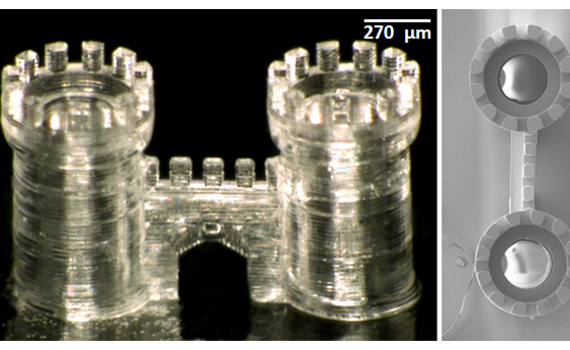NEWS
New method to 3D-print glass objects developed

Researchers at the Karlsruhe Institute of Technology, in Germany, have developed a method for 3D-printing with glass.
The 3D printer is supplied with a novel mixture of high-purity quartz glass nanoparticles and a small amount of liquid polymer, which works as a binding agent. Scientists use stereolithography to cure the printed product with light, before washing out any remaining liquid in a solution bath. Any polymer that remains trapped in the glass is melted away during a final heating stage.
"The shape initially resembles that of a pound cake; it is still unstable, and therefore the glass is sintered in a final step, i.e. heated so that the glass particles are fused," Bastian E. Rapp, a mechanical engineer at KIT,said.
Previous attempts to 3D-print with melted glass yielded porous structures with a rough surface. The new method avoids such problems. Scientists were able to construct a variety of complex structures using the new 3D-printing technique.
Measurements of the final product suggests the glass features intricate microstructures. Researchers observed glass structures measuring just a few micrometers.
"[The] technology could be used, for instance, to make small, complex structures out of a large number of very small optical components of different orientations," Rapp explained.
Researchers believe the method could be used to produce special lenses for a variety of optical applications.
© All rights reserved. Citing to www.ict.az is necessary upon using news






